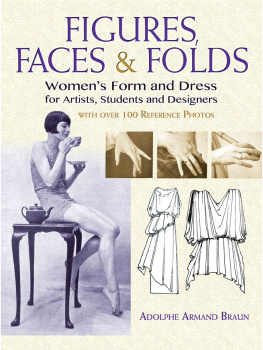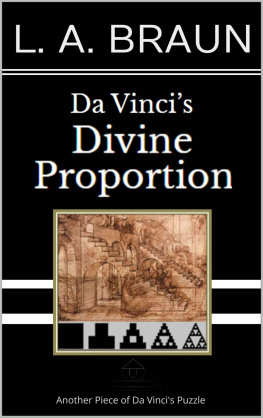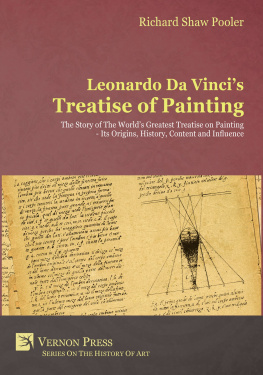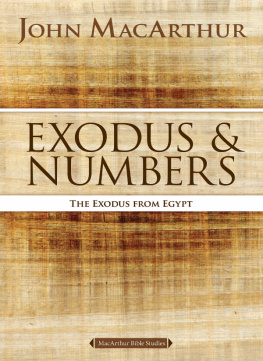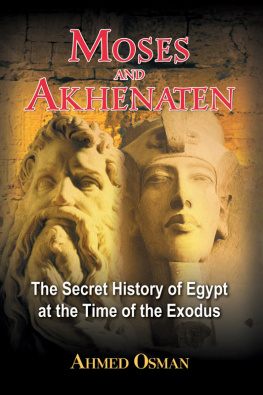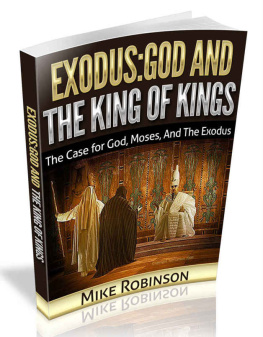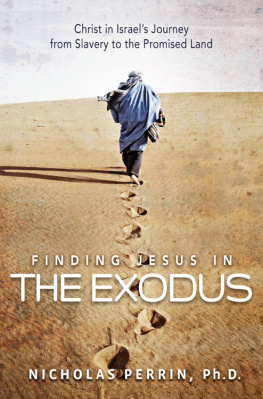Enigmatic
Moses
By L.A. Braun
Copyright 2014-2015 by L. A. Braun
All rightsreserved.
CONTENTS
SECTION I: THEOVERVIEW ON MOSES: An introduction to the great hero Moses through anoverview of his artwork and illustrations in search of the hidden number'26'--while probing the possible meaning of its use in the context of a comprehensive account of the ProphetMoses lifetime in ancient Israel and Egypt during the Exodus.
. ......Chapters 1 to 13.
SECTION II: ANINQUIRY INTO REBUS HIDDEN IN THE ARTWORK RELATED TO MOSES: An evaluation of theartwork and illustrations related to Mosesand Egypt in pursuit of hidden rebus andpictograms--investigating the plausible meaning of their use within the contextof this tale of the Exodus. Our examination of these works guides us through manyfascinating ancillary notionssuch as the sacred secret knowledge of thePhilosophers Stone.
.Chapters 14 to 31.
INTRODUCTION
This book guides thereader through the life story of the Hebrew Prophet known as Moseswho had beena significant diviner and leader of early Israel during their passage out ofAfrica. Along the way we deliberate on the relevance of Leonardo Da Vincissecretsprimarily the number 26 and rebusin regard to the related artwork.We want to leave no stone unturned in respect to our search for the meaning ofDa Vincis secrets.
Leonardo Da Vincihad secretly positioned the number '26' and rebus all over his works. Otherfamous artists had also done the same. Exploring the possible import of thesesecrets is the primary focus of all of the books presented by Da Vincis REALHidden Secrets. We have traced Da Vincis hidden secrets throughout the worldsmost premium artworks and literary classics. We continue to try to understandthe meaning of these secrets here, by delineating their possible relationshipto the shifting themes of Moses and the Exodus. As always, we keep our eyesopen for any conceivable evidence of a new possible meaning of the number '26'and rebus.
SECTION I- CHAPTER ONE
Today, we examinethe Bibles account of Moses. As we assess the artwork and analyze his stories,we deliberate on the significance of Leonardo Da Vincis secretsprimarily thenumber 26 and rebus. Rebus is an encoding technique wherein pictures areused to epitomize words, parts of words or numbers. We search for evidence ofthese secrets throughout the wealth of illustrations depicting the travails ofMoses during the forty year Exodus.
Everyone knows Mosesas the hero leader in the Old Testament of the Hebrew Bible who had, during theExodus, led the Hebrew people out of slavery in Egypt. However, his life wasmore multifaceted than just the Exodus. In fact, Moses life story can bedivided into three distinct sectionsbecause his 120 year life had spannedforty years as an Egyptian prince, forty years as a shepherd in the desert andforty years as the leader of the Hebrew people during the Exodus. His lifestory had also been marked by an unparalleled personal relationship with theHebrew God YHWH (pronounced Yahweh). After the Hebrews had escaped their400 year exile in Egypt, Moses had been the driving force who had led thepeople during the Exodusfinally dodging out of the dark slavery of Egypt andinto the bright freedom of the Promised Land.
Moses had beenchosen by God because he was more humble than any other man. Numbers 12:3 .There had not arisen any other prophet since Moses in Israel that was as worthyas Moses, because YHWH had known him face to face. We will explore what thatmeans. To put the entire topic of this book into a proper historical context,Moses had been the author of the Torahthe first Old Testament Bible books(which had discussed creation, the Fallen Angels and their Nephilim offspring,the flood, the early patriarchs lives, the Exodus and the Mosaic Law ofIsrael).
About the time ofMoses Exodus departure the pharaohs were beginning to build the tombs of theValley of the Kings in Egypt and the Great Pyramid and Sphinx were already atleast a thousand years old. Meanwhile, out in the middle of the MediterraneanSea, the island of Thera/Santorini was convulsively blowing its top. In thecontext of Greco-Roman mythology, Moses sojourn out of Egypt had roughlycorresponded with the Jason and the Argonauts mission to capture the GoldenFleece. About two hundred years after Moses lifetime, the Trojan War would haveravaged the coast of what is today modern Turkey.
Although Moses hadbeen raised as an Egyptian prince by the Pharaohs daughter and maintained thatlavish lifestyle for his first forty years, he had later turned into a prophetand religious leader among the Hebrews. It is believed by most scholars that hewrote the Torah--which includes the first five books of the Old Testament.Thus, he had been a critically important prophet in Judaism; however, he wasalso an important prophet to both Christianity and Islam.
The first section ofthis book will provide the overview on an assortment of Moses experiences bothbefore and during the Exodus. As we proceed, we point out all of the number26s appearing in the connected artwork. The second section of this book thenreflects on the evidence of rebus and pictograms found in the artwork linked toMoses. As a corollary effort to complement our principal analysis, we alsostudy the works of several authors to determine the extent to which they hadused this rebus to encode secrets into their texts and artwork.
An illustration ofMoses being drawn from the Nile:

Theshadow of the 26 appears everywhere that the characters are looking and atthe edge of every pointing finger . It wassacred secret knowledge that wasnt supposed to be obvious unless you knew itwas there.


Even though our huntthrough Leonardo Da Vincis works looking for embedded secrets had started withthe number 26, it had then quickly launched off into new and rousingdiscoveries. Wed found a number under a rose in the Madonna of the Stonesand that painting had pointed to a geometric circle with unique propensitieswhichwe had christened as the PHI CIRCLE. That wasnt the apex climax though. Wehad also noticed that Da Vinci had used rebus (pictograms using pictures forwords) to hide secrets within his works. This same rebus had been hidden allover the Philosophers Stone genre of texts. Piecing the evidence together, itwasnt long before wed traced this identical rebus throughout countless otherworks in cultures spanning the globe.
Does rebus reallyexist in Da Vincis work or in the Philosophers Stone genre? Yes. Da Vinci hadseemed to personally hide secrets in his works through the encoding practice ofrebus on several occasions. We had also found this rebus running rampantthroughout the Philosophers Stone texts. It wasnt much longer before wednoticed a most disturbing pattern arising in the evidence for rebus and webased our hypothesis upon that repetitious design.
CHAPTERTWO
What is the meaning of the secret placement of thenumber 26 all over the artwork of the epic tale of Moses? We attempt to notbe too dogmatic about just why the number 26 has been so criticallyimportant, having been secretly embedded all over the finest art of Leonardo DaVinci (and all over the best art of the entire world). In one of our books, wehad compared it to Platos Life Force and, as a derivative idea, to StarWars The Force. In other books, wed also explored it as being the BuddhistChi or Qi.




